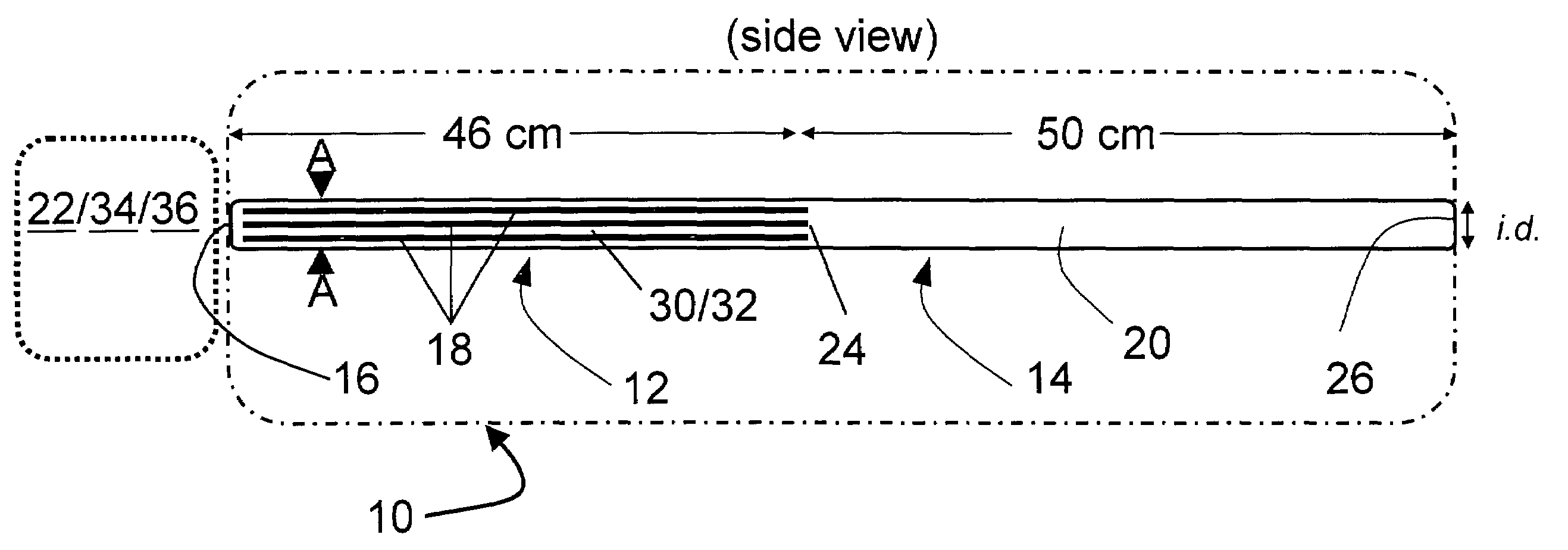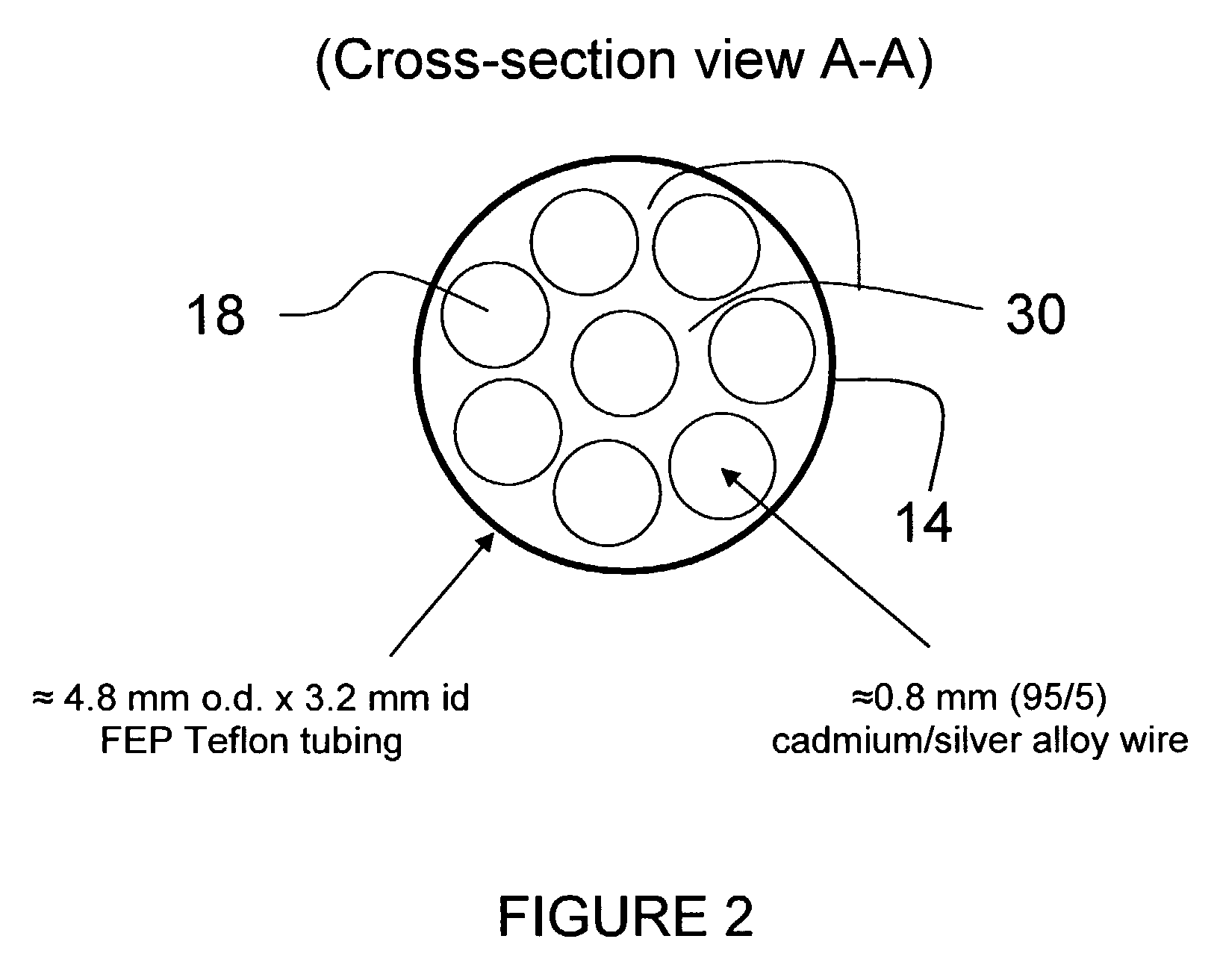Reduction device for nitrate determination
a nitrate and reduction device technology, applied in the direction of machines/engines, chemical/physical processes, combustion air/fuel air treatment, etc., can solve the problems of reducing difficult control, unfavorable kinetics of hydrazine reduction to nitrate, etc., to achieve the effect of reducing the nitrate to other species, reducing the nitrate to nitrate, and reducing the nitrate redu
- Summary
- Abstract
- Description
- Claims
- Application Information
AI Technical Summary
Benefits of technology
Problems solved by technology
Method used
Image
Examples
example 2
Void Volume of Multiple Strand, Wire-in-Tube Configurations
[0045]A 1-meter length section of 3.2-mm i.d. tubing is threaded with 8,1-meter lengths of 1-mm diameter cadmium / silver (95 / 5) wire. The surface-to-volume ratio equals 14.3 mm2 / microliter.
example 3
Void Volume of Multiple Strand, Wire-in-Tube Configurations
[0046]A 1-meter length section of 3.2-mm i.d. tubing is threaded with 8,1-meter lengths of 0.8-mm diameter cadmium / silver (95 / 5) wire. The surface-to-volume ratio equals 5 mm2 / microliter.
example 4
Void Volume of Multiple Strand, Wire-in-Tube Configurations
[0047]A 1-meter length section of 4 mm i.d. tubing is threaded with 10, 1-meter lengths of 1-mm diameter cadmium wire. The surface-to-volume ratio equals 6.7 mm2 / microliter.
PUM
| Property | Measurement | Unit |
|---|---|---|
| length | aaaaa | aaaaa |
| length | aaaaa | aaaaa |
| length | aaaaa | aaaaa |
Abstract
Description
Claims
Application Information
 Login to View More
Login to View More - R&D
- Intellectual Property
- Life Sciences
- Materials
- Tech Scout
- Unparalleled Data Quality
- Higher Quality Content
- 60% Fewer Hallucinations
Browse by: Latest US Patents, China's latest patents, Technical Efficacy Thesaurus, Application Domain, Technology Topic, Popular Technical Reports.
© 2025 PatSnap. All rights reserved.Legal|Privacy policy|Modern Slavery Act Transparency Statement|Sitemap|About US| Contact US: help@patsnap.com



